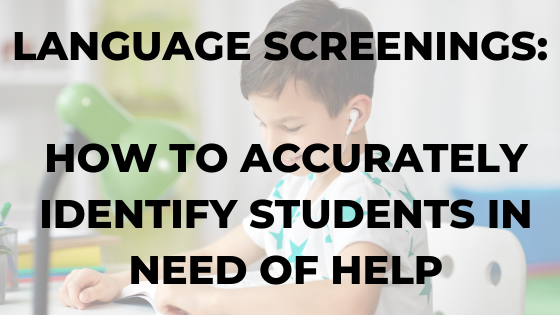I get asked all the time, “What’s the best language screener”?
Usually people want some kind of a formal test, because that’s what most speech pathologists been trained to do.
But if you want to accurately identify kids who might need a full case study evaluation…that type of thinking might result in overidentifying or worse…underidentifying kids who might need our help.
The truth is, there isn’t a perfect formal language screener out there (anyone who tells you differently is misinformed).
Language is too complex to be assessed in a 10-minute screening period.
This makes it hard for busy SLPs to get the information they need to know they’re not letting kids fall through the cracks.
Part of this confusion results from that we have to do legally in order to initiate an evaluation…which may not be the case when you actually consider federal guidelines.
I clarify what you really need in this video.
The good news is that the process of screenings is less complicated than you think.
You may not actually need some formal “score” to tell you when to move forward with an evaluation.
That’s why I’ve created a tool to help you streamline the screening process so you can ensure you’re helping the kids who need you most.
You can learn more about how it works in this video.
If you have a solid process for language screening and identification of students who may be in need of help, you’ll be more effective than any test will ever be in isolation.
I go into more details about the processes you need to identify and treat language disorders effectively in my course, Language Therapy Advance Foundations.
In the course manual, I include the Academic Language Skills-Rating Scale (described in the video above), so you can efficiently gather data for language screenings and evaluations.

